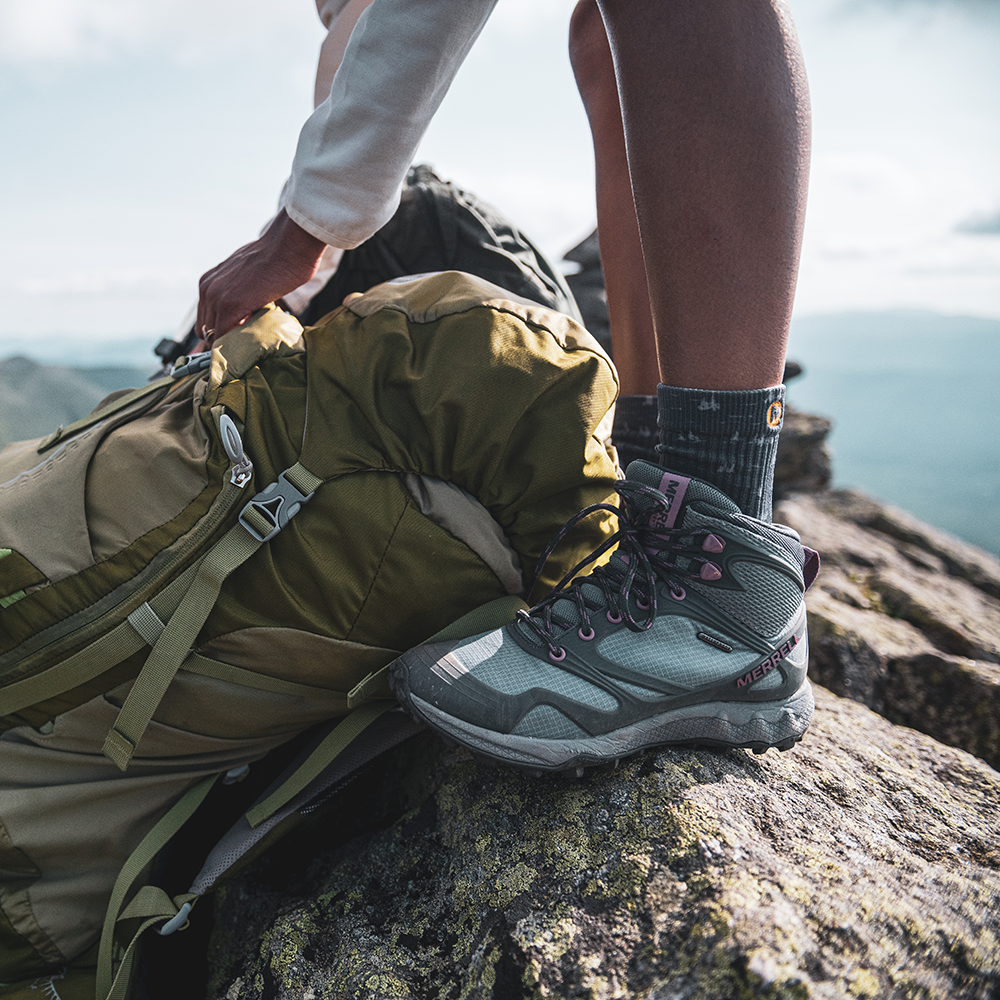Tips for Finding Your Next Pair of Hiking Boots
by Jim O'Leary on Aug 5, 2020 We love the outdoors, waterskiing, and of course snowboarding and skiing here at Peter Glenn. But we also love hiking! Simply getting out into nature and enjoying a walk is a great way to spend an afternoon or a few weeks if you're backpacking. And best of all, the only thing you generally need is somewhere to hike and a desire to go there.
We love the outdoors, waterskiing, and of course snowboarding and skiing here at Peter Glenn. But we also love hiking! Simply getting out into nature and enjoying a walk is a great way to spend an afternoon or a few weeks if you're backpacking. And best of all, the only thing you generally need is somewhere to hike and a desire to go there.
But while that may be all you need, if you've done it yourself, you've probably found that some upgraded hiking footwear would be a nice improvement. Whether you're facing difficult terrain, or just want to keep going even when the weather doesn't cooperate, the right boots open up possibilities not available if you're only hitting the trail in sneakers.
0. Understand Your Needs
But how do you pick the right hiking boots? What do you look for to know you're getting the right ones? The full selection of choices can be daunting at first glance, but we have a handy video and the guide below to help you navigate your options.
Before doing anything, it's important to understand what you'll need your footwear to do. After all, what you want on your feet while snowshoeing in Aspen is different from the shoes you'll wear while completing the Camino de Santiago. Even if you're not doing either of those extremes, it's still important to understand what you'll be asking of your footwear.
How much protection will you need? And protection from what? Will you need help finding traction along the way?
Be sure to check out our full collection of boots:

1. Traction
Traction is what makes the difference between any other shoe and hiking footwear. The aggressive, lugged sole of hiking footwear allows it to find grip on difficult natural surfaces that other shoes would just slide right off of. And not only does that help you, but it also protects the trail by limiting the damage done as you pass.
Most of assessing the outsole of hiking footwear are pretty intuitive. If you're looking for more traction, look for a more aggressive-looking outsole with bigger lugs with large gaps between lugs to grip into the terrain. If you're looking for something lighter and more forgiving, look for something more toned-down, closer to a traditional sneaker.
But there is a little bit more to it than that. Some hiking boots use Vibram®, Michelin®, or Continental® Outsoles, designed by a third-party company that focuses specifically on making great boot outsoles. They're ideal for most hiking situations, and sure to do what you need.

2. Height
If traction is what separates sneakers from hiking footwear, height is what divides hiking shoes from hiking boots. Traditionally an over-ankle height is the most common because it provides protection from trail hazards and debris while providing extra support for your ankle.
But low-rise hiking shoes have become increasingly popular in recent years. Rising no higher than regular sneakers or athletic shoes, they offer hikers headed to mild terrain in warmer weather a lighter, more comfortable option.
And of course, on the opposite end of the spectrum are high-rise boots. Ideal for the roughest terrain and the harshest weather, they provide the most coverage and therefore protection. They also provide more support for your ankles, making them a popular choice for backpackers planning on carrying heavy loads over difficult trails.
3. Weather Protection
One of the nice things about going hiking is getting out in nature. And for some people that means EVERY nature; rain or shine, sweltering or frigid.
If you're one of those people, picking a boot that's built to protect you from that weather can do a lot to make you more comfortable. The most obvious and common protection is waterproofing. Whether it's an in-house waterproof treatment or top-of-the-line GORE-TEX®, waterproof boots go a long way to making rainy days more enjoyable, and even on sunny days can make stream crossings a little less perilous.
A more specialized kind of weather protection is insulation for cold-weather wear. Using technologies like Thinsulate™ and PrimaLoft®, or in-house insulation, these boots provide the warmth needed to enjoy the outdoors in cold and snow. And this is important because, despite the burly construction and wet-weather protection, most hiking footwear is actually designed to help keep you cool. So, by adding insulation hiking boot manufacturers are letting you enjoy the trails all season long.

4. That Perfect Fit
After that? It's all down to fit, and what matches the shape of your foot best. Look for a boot that still leaves room for your toes to wiggle, so you don't get squished at the front of the boot when you're heading downhill. And make sure your heel is securely supported, even if you went with low-rise hiking shoes since that helps prevent blisters.
But that is, more or less, it! Broken down like this it really is that simple to pick the right hiking footwear. But if you're still uncertain about what you need, or unsure if a boot will do what you need it to do, don't hesitate to ask. The gear experts at Peter Glenn are always here to help.

 Accessibility
Accessibility































